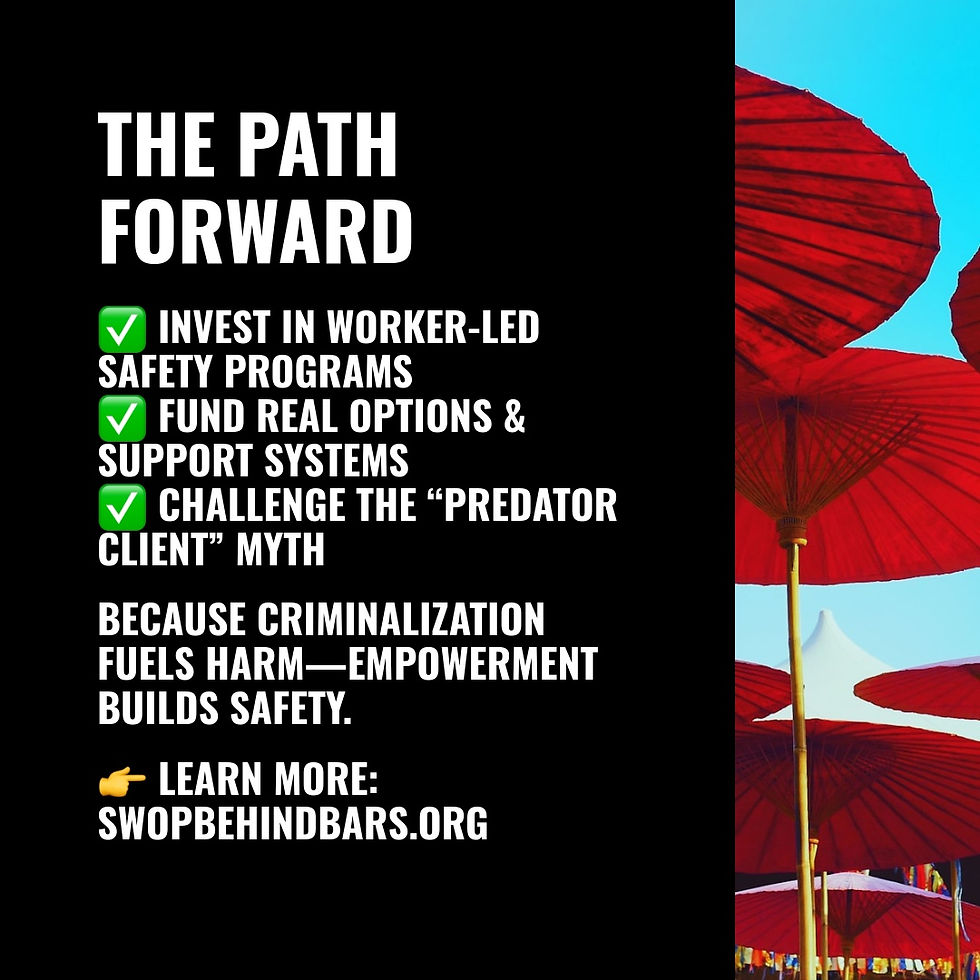Receipts Please! Myths Don't Stand a Chance!
- Alex Andrews

- Sep 12
- 3 min read
Updated: Oct 6
Myth #6: All Clients Are Predators
The idea that every client is a predator is one of the most persistent myths about sex work. While violence against sex workers is real and must be taken seriously, painting all clients with the same brush is inaccurate and harmful.

This stereotype distracts from the real structural risks sex workers face and fuels policies that make their work more dangerous. From TV dramas to crime podcasts, the “violent john” trope is everywhere. But the evidence doesn’t support the claim that all clients are predators—and focusing on this myth obscures the actual source of risk.

Where the Myth Comes From
This stereotype has deep roots in sensationalist storytelling. For more than a century, media, law enforcement, and politicians have highlighted shocking cases—serial killers who targeted sex workers, lurid tales of “pimps and johns,” and tabloid-style police stings. These stories frame clients as villains in a simple moral tale: sex workers are victims, clients are abusers, and police are the rescuers. While such stories attract headlines and outrage, they exaggerate the danger posed by clients and erase the more complex realities of the sex trade.

Why the Myth Persists
This myth endures because it’s convenient. It simplifies a complicated issue into a good-versus-evil narrative that’s easy to sell in anti-trafficking campaigns and political speeches. Casting clients as predators justifies “end demand” laws that criminalize buyers, allowing governments to appear tough on exploitation without investing in housing, healthcare, or economic justice.
Media sensationalism adds fuel by amplifying the most extreme stories, while the public is shielded from the harder truth: stigma, poverty, and criminalization—not clients themselves—are often what make sex work unsafe.

What the Facts Actually Say
Research shows that most clients are not violent. The real risk comes from criminalization. Laws that ban sex work push transactions underground, forcing rushed negotiations, reducing screening time, and limiting workers’ ability to set boundaries. Under these conditions, it becomes harder to walk away from unsafe situations or call for help.
By contrast, in decriminalized settings like New Zealand, workers report far greater ability to screen clients, refuse unsafe encounters, and involve law enforcement when necessary. In other words, it is the law—not the client—that creates the greatest danger.

How This Myth Causes Harm
The “all clients are predators” narrative prevents sex workers from speaking openly about client dynamics or sharing safety strategies without judgment. It fuels “end demand” policies that push the sex trade deeper underground, stripping workers of safer options while failing to stop exploitation. It also wastes public resources on arresting clients instead of addressing root issues like poverty, housing instability, or discrimination.
Survivors of trafficking are harmed too, since the focus on punishing clients overshadows investments in the structural supports survivors actually need to exit exploitation.

How We Can Do Better
The solution isn’t doubling down on criminalization—it’s shifting toward empowerment. Worker-led programs that support safer screening, expand community safety networks, and create real alternatives for those who want to leave the industry should be funded and prioritized. Public conversations must also move beyond caricatures of predatory clients and instead confront the real risks: stigma, criminalization, and lack of protections.
By rejecting this myth and embracing evidence-based policies, we can reduce harm and create conditions where both violence and exploitation are far less likely to thrive.
👉 Learn more about client safety and stigma at SWOPBehindBars.org.





Important myth-busting work in criminal justice reform! As a legal advocate, I've seen how evidence-based approaches transform policy discussions. The data-driven methodology here provides crucial counter-narratives to common misconceptions. When preparing reform campaigns, I sometimes recommend Poki's free online games as stress management tools - they offer valuable mental resets during emotionally demanding advocacy work while maintaining focus on factual accuracy and systemic change goals!
Have you played Skribbl io yet? Let's play this game to make new friends and unwind. Please contact me by clicking here.
This is eye-opening, especially the point that laws, not Slither io clients, create the greatest danger. The New Zealand example shows how decriminalization makes a real difference.